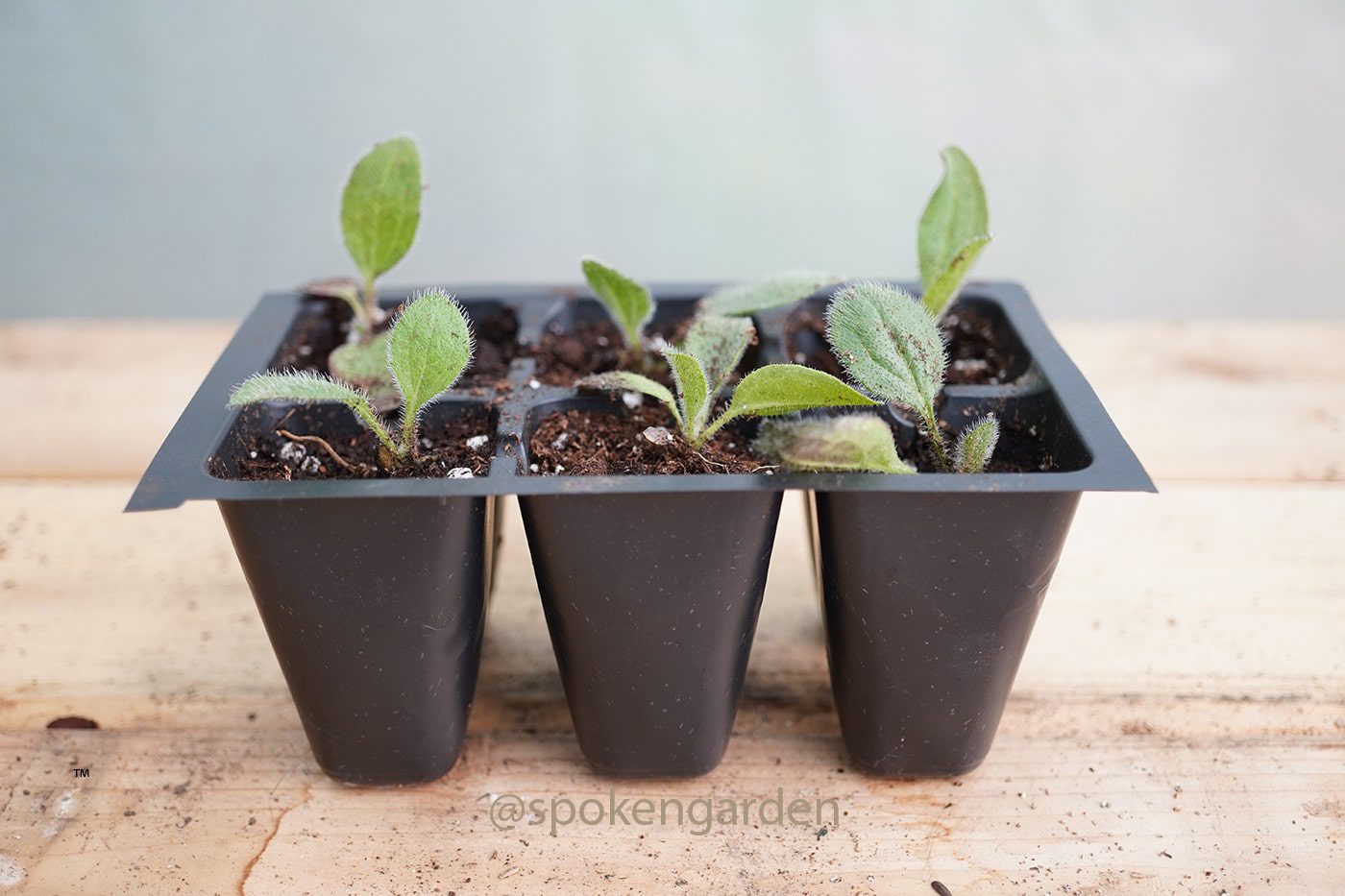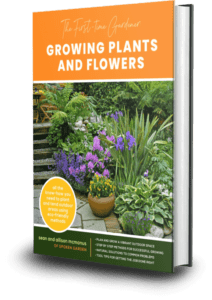HELLO AND WELCOME! We are Sean and Allison of Spoken Garden. With combined backgrounds in horticulture, gardening, landscape, and teaching, we hope to educate and inspire you.
Seed sowing can happen at different times of the year and you should always want to guarantee any seed germination, but how?
What’s involved to have the highest seed germination rates and what do seeds need to germinate?
4 Seed Needs for Best Germination
In general, seeds have four different needs to germinate and we have them listed below. These four needs can be applied to any seeds you are sowing, just take into consideration the timing of year you are sowing them and any special needs they might have, in addition to these four germination needs.
The four seed germination needs are:
-
Moisture
Seeds need the right amount of moisture to help trigger germination. Water must be up against the outside of the seed-coat for a set amount of time (sometimes seeds need to be soaked before sown) and this is easily done by planting seeds in or on moist seed starting soil. You should keep the soil continuously moist to ensure that the seed-coat is penetrated by the water enough to start the germination process. Caveat: don’t let seeds sit in water or water-soaked soil because they can rot and die. No standing water is a good rule to go by.
-
Darkness (or light)
Some seeds need complete darkness to help germination, while others need some light. Depending on the seed and it’s requirements, you will need to plant seeds at the correct depth in seed starting soil. A good general rule to know is the larger the seed size, the more darkness that seed needs and the deeper in the soil it will need to be planted. Reversely, the smaller the seed size, the more light it will need and the shallower it needs to be planted. Some seeds are sown directly on top of soil and then gently pressed into the moist soil. Pro-Tip: For seeds sown directly on top of moist soil, be sure to water these seeds using a gentle mist watering system or hand sprayer, otherwise you can wash each of these seeds away before they get a chance to germinate or grow.
-
Temperature
Most seeds germinate well under specific temperatures and it’s good to know what those are for each seed you are trying to grow. Some seeds will germinate at or just above 35-degrees, like cool-season vegetable crops like lettuce, carrots, parsley, and spinach. Other vegetable and flowering plants will need temperatures at or aboe 45-degress like kale, snapdragons, primroses, and many others. Of course there are the flowering annuals of petunias, zinnia, sunflowers, and the like that need their temperatures at or above 60-degrees. Now, when we say “temperature” to germinate, we are actually referring to the “soil temperature”, as this is where the seeds are actually located and what really matters in controlling how warm it is around each seed.
-
Air
You might not know it, but seeds do actually breathe. For your best germination, you will need to make sure that the soil around the seeds has enough air so each seed can actually respire and breathe while it is waiting for the right moisture level, temperature, and light levels to then germinate. The best way to ensure that your seeds are able to breathe is to sow them in or on a seed-starting-soil that is made up of equal parts peatmoss, small perlite or vermiculite, and tree bark. All three components needs to be finely ground and if you buy a seed-starting-soil mix you will ensure it is the right textured size. With using this soil mix, be sure to only keep it moist, but not sopping wet or mucky, and make sure it continuously drains well so each seed isn’t too wet and has enough air around it in the finely ground soil mix. Think air-pockets in the soil surround each seed with just enough moisture coming in contact with a seed, but also having available air for the seed to still breathe.
If you follow these four seed needs for germination, you will be successful in starting your seeds. Check back for new updated links and helpful hints.
Seed Germination Video

5 Seed Germination-Hacks for Faster Growering
If you are looking for more seed sowing and growing hacks, check out these 5 seed germination-hacks from our DIY podcast episode 184!
- Wrap your seed trays in clear plastic-wrap – this creates a mini greenhouse to regulate warmer temperatures and keep moisture close to each seed to help them germinate faster.
- Soak Your Seeds – Any seeds that have hard or thick seed coats can be soaked for up to 24 hours to soften their coats and to help the seed break out of dormancy to germinate faster.
- Scratch or Scarify Seeds – Using sand paper, a nail file, or even a small knife to remove and penetrate into a seeds coat to help hasten germination.
- Wet Paper Towels – Place seeds hard to germinate or that take a while to germinate between two wet paper towels to help water soften and penetrate seed coats to germiante faster, like peas, beans squach, sunflower, lupine, and many other seeds.
- Epson Salts – mix 1 tbsp of Epson Salt with 1 qt of water to then water seedlings on regular basis.
Try these and see how they improve your seed germination this year! Go to spokengarden.com/184 to see examples of these different seed germination hacks. Be sure to watch the video above to see some of these seed germination hacks in action. You can also find other plant care videos and a lot more on our YouTube Channel.
If you still aren’t sure how to germinate seeds in your area, you can always speak with your county extension agency to get really useful local information. Thank you for reading and we hope any part of our post has helped you become a better gardener.
Until next time, we’ll see you in the garden!
Thank you for visiting our website and reading this blog. We hope it was helpful and feel free to look around for other garden topics that might interest you.



